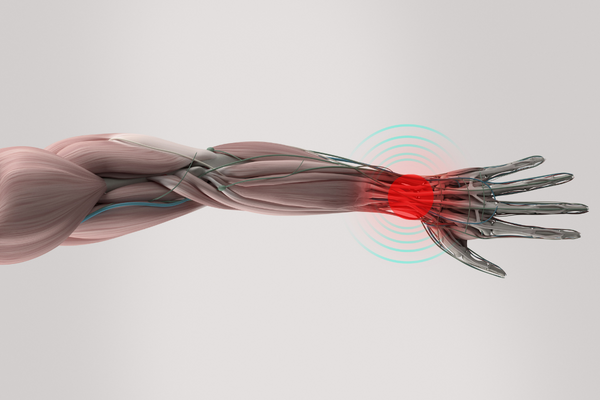Carpal tunnel syndrome is a condition that affects the hand and wrist. It occurs when the median nerve, which runs from the forearm to the hand through a narrow passage in the wrist called the carpal tunnel, becomes compressed or squeezed. The most common conditions associated with carpal tunnel syndrome are:
- Numbness and tingling: This is the most common symptom of carpal tunnel syndrome. It typically affects the thumb, index, middle, and ring fingers, and can be accompanied by a feeling of pins and needles.
- Weakness: As carpal tunnel syndrome progresses, the muscles in the hand and wrist can become weakened, leading to difficulty gripping and holding objects.
- Pain: Pain associated with carpal tunnel syndrome can vary from mild to severe and may be felt in the hand, wrist, forearm, or even the upper arm.
- Loss of hand function: In some cases, carpal tunnel syndrome can lead to a loss of hand function, making it difficult to perform everyday tasks such as buttoning a shirt or typing on a keyboard.
- Swelling: Carpal tunnel syndrome can cause swelling in the hand and wrist, which can make it difficult to wear jewelry or clothing that fits tightly around the wrist.
- Burning sensation: Some people with carpal tunnel syndrome may experience a burning sensation in the hand or fingers, which can be quite uncomfortable.
- Stiffness: Stiffness in the hand or wrist is another common symptom of carpal tunnel syndrome, and can make it difficult to move the affected hand or fingers.
- Reduced grip strength: As carpal tunnel syndrome progresses, it can lead to a reduction in grip strength, making it difficult to hold onto objects or perform tasks that require a strong grip.
- Coldness or numbness: In some cases, carpal tunnel syndrome can cause the affected hand or fingers to feel cold or numb, which can be quite uncomfortable.
- Shooting pains: In more severe cases of carpal tunnel syndrome, people may experience shooting pains that travel up the arm and into the shoulder, making it difficult to perform even simple tasks.



